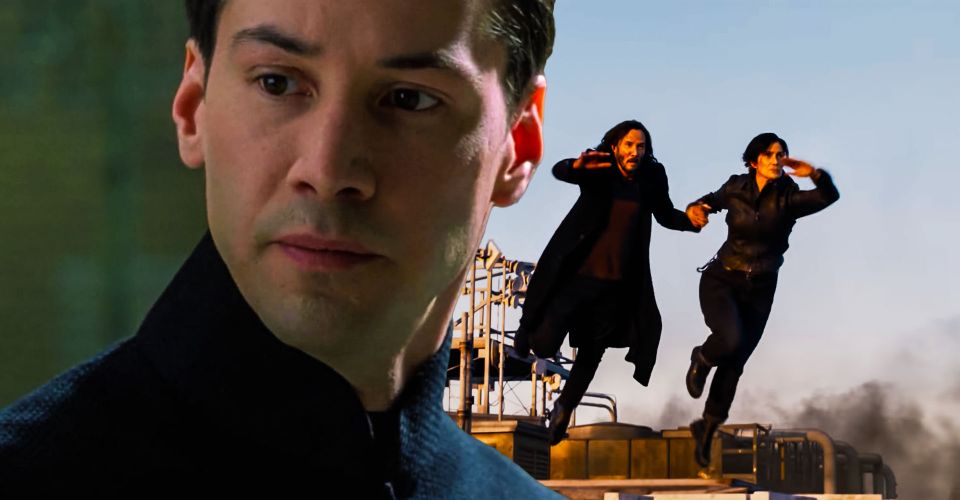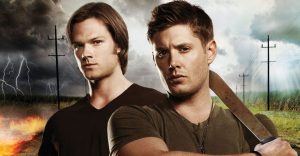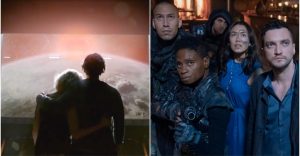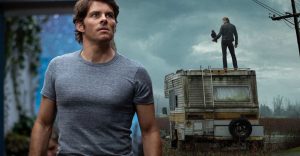Why Trinity Can Fly, Not Neo, in The Matrix Resurrections

How does Trinity possesses the power to fly in The Matrix Resurrections, while Neo is left embarrassingly grounded? Flying has remained a vitally important theme throughout the Wachowskis’ entire Matrix story. Finally embracing his status as The One during the climax of 1999’s original The Matrix movie, Neo defeated Smith and soared through the skies – a visual exclamation point to announce his arrival as The One. In The Matrix Reloaded and The Matrix Revolutions, flight became the power most synonymous with Neo – his “Ace of Spades,” if you will, and even in The Matrix Resurrections (set 60 years later) a starry-eyed Shepherd asks, “Is it true you could fly?“
Unfortunately for Neo, his signature trick goes missing in The Matrix Resurrections. The ability to fly would’ve come in handy on several occasions, but Keanu Reeves’ protagonist stalls during takeoff each time. Having given up on finding his wings in time for them to be useful, Neo is amazed when Trinity develops her own flight powers. Refusing to remain slaves of The Analyst, Neo and Trinity take a leap of faith from a San Francisco skyscraper. Neo’s performance issues continue, but Trinity steps in to save them, learning to fly just in time.
The Matrix Resurrections doesn’t explicitly reveal how Trinity can fly. In truth, attempting to do so onscreen would be more trouble than it’s worth. However, the script does leave a trail of breadcrumbs to address Trinity now wielding The One’s powers. Essentially, the process of being resurrected and reuploaded into the Matrix (and coded all over again whenever he tried to escape) has quashed Neo’s One powers. None of us are at our best after a long nap and, mirroring the first Matrix, Neo spends almost the full Matrix Resurrections‘ runtime slowly reawakening his potential – the kung fu, then the telekinesis, etc. By The Matrix Resurrections‘ final scene, Neo is spotted flying high once again, proving he does eventually recover his old bag of One tricks.

Answering how Trinity manages to emulate those abilities is a trick in itself. The key probably lies in Neo and Trinity’s dual importance to The Analyst’s new Matrix. During the original trilogy (and long before), The One’s presence stabilized the Matrix. As Neil Patrick Harris’ villain explains, however, The Architect failed to grasp the value of human minds. The Analyst realized Neo and Trinity together were the true threat, so hooked the pair into his Anomoleum tower to provide the framework for his new Matrix build, keeping them close – but not too close. Previously, Neo alone was the sole force stabilizing the Matrix; in The Matrix Resurrections, Neo and Trinity share that role, and this could explain why she can also access The One’s “system admin” powers, controlling everything around her just like Neo.
Whatever the scientific explanation behind Trinity’s flight might be, The Matrix Resurrections‘ thematic reasoning is far more important (and, mercifully, easier to explain). Had Neo woken up in full possession of his One mojo, The Matrix Resurrections would’ve been a very short film, so weakening him is a matter of practicality – and also makes sense since Keanu Reeves’ character is rediscovering himself after so long asleep. The decision to then have Trinity evolve into The One (or is it “The Two” now?) rectifies her terrible death from The Matrix Revolutions.
All through the Matrix trilogy, the Wachowskis championed the importance of Neo and Trinity as a pair. It was Trinity’s kiss that awoke Neo’s One persona in the first place, then Neo’s love that compelled him to break the cycle of Zion’s destruction. In the trilogy’s final chapter, however, Trinity ferries Neo to his destination and promptly dies, politely allowing her boyfriend to take center stage. The Matrix Resurrections gives Trinity the end she always deserved. Saving Neo by learning to fly finally acknowledges her importance, while simultaneously subverting typical Hollywood gender roles after The Matrix Revolutions contributed to them.
About The Author


















